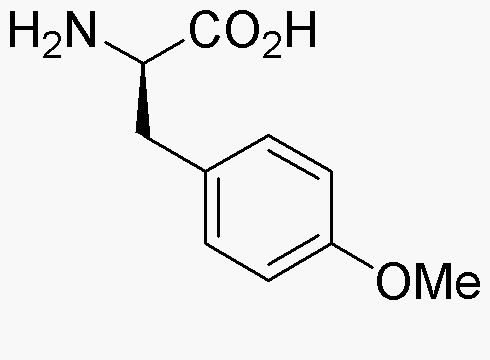O-Methyl-D-tyrosine is widely utilized in research focused on:
- Neuroscience Research: This compound is used to study neurotransmitter systems, particularly in the investigation of dopamine pathways, which can help in understanding conditions like Parkinson's disease.
- Pharmaceutical Development: It serves as a valuable intermediate in the synthesis of various pharmaceuticals, especially those targeting neurological disorders, enhancing drug efficacy.
- Biochemical Studies: Researchers employ O-Methyl-D-tyrosine to explore protein interactions and enzyme activities, providing insights into metabolic processes.
- Nutrition Science: The compound is studied for its role in amino acid metabolism, aiding in the development of dietary supplements aimed at improving cognitive function.
- Cancer Research: It is investigated for its potential effects on tumor growth and development, contributing to the search for novel cancer therapies.
General Information
Properties
Safety and Regulations
Applications
O-Methyl-D-tyrosine is widely utilized in research focused on:
- Neuroscience Research: This compound is used to study neurotransmitter systems, particularly in the investigation of dopamine pathways, which can help in understanding conditions like Parkinson's disease.
- Pharmaceutical Development: It serves as a valuable intermediate in the synthesis of various pharmaceuticals, especially those targeting neurological disorders, enhancing drug efficacy.
- Biochemical Studies: Researchers employ O-Methyl-D-tyrosine to explore protein interactions and enzyme activities, providing insights into metabolic processes.
- Nutrition Science: The compound is studied for its role in amino acid metabolism, aiding in the development of dietary supplements aimed at improving cognitive function.
- Cancer Research: It is investigated for its potential effects on tumor growth and development, contributing to the search for novel cancer therapies.
Documents
Safety Data Sheets (SDS)
The SDS provides comprehensive safety information on handling, storage, and disposal of the product.
Product Specification (PS)
The PS provides a comprehensive breakdown of the product’s properties, including chemical composition, physical state, purity, and storage requirements. It also details acceptable quality ranges and the product's intended applications.
Certificates of Analysis (COA)
Search for Certificates of Analysis (COA) by entering the products Lot Number. Lot and Batch Numbers can be found on a product’s label following the words ‘Lot’ or ‘Batch’.
*Catalog Number
*Lot Number
Certificates Of Origin (COO)
This COO confirms the country where the product was manufactured, and also details the materials and components used in it and whether it is derived from natural, synthetic, or other specific sources. This certificate may be required for customs, trade, and regulatory compliance.
*Catalog Number
*Lot Number
Safety Data Sheets (SDS)
The SDS provides comprehensive safety information on handling, storage, and disposal of the product.
DownloadProduct Specification (PS)
The PS provides a comprehensive breakdown of the product’s properties, including chemical composition, physical state, purity, and storage requirements. It also details acceptable quality ranges and the product's intended applications.
DownloadCertificates of Analysis (COA)
Search for Certificates of Analysis (COA) by entering the products Lot Number. Lot and Batch Numbers can be found on a product’s label following the words ‘Lot’ or ‘Batch’.
*Catalog Number
*Lot Number
Certificates Of Origin (COO)
This COO confirms the country where the product was manufactured, and also details the materials and components used in it and whether it is derived from natural, synthetic, or other specific sources. This certificate may be required for customs, trade, and regulatory compliance.


